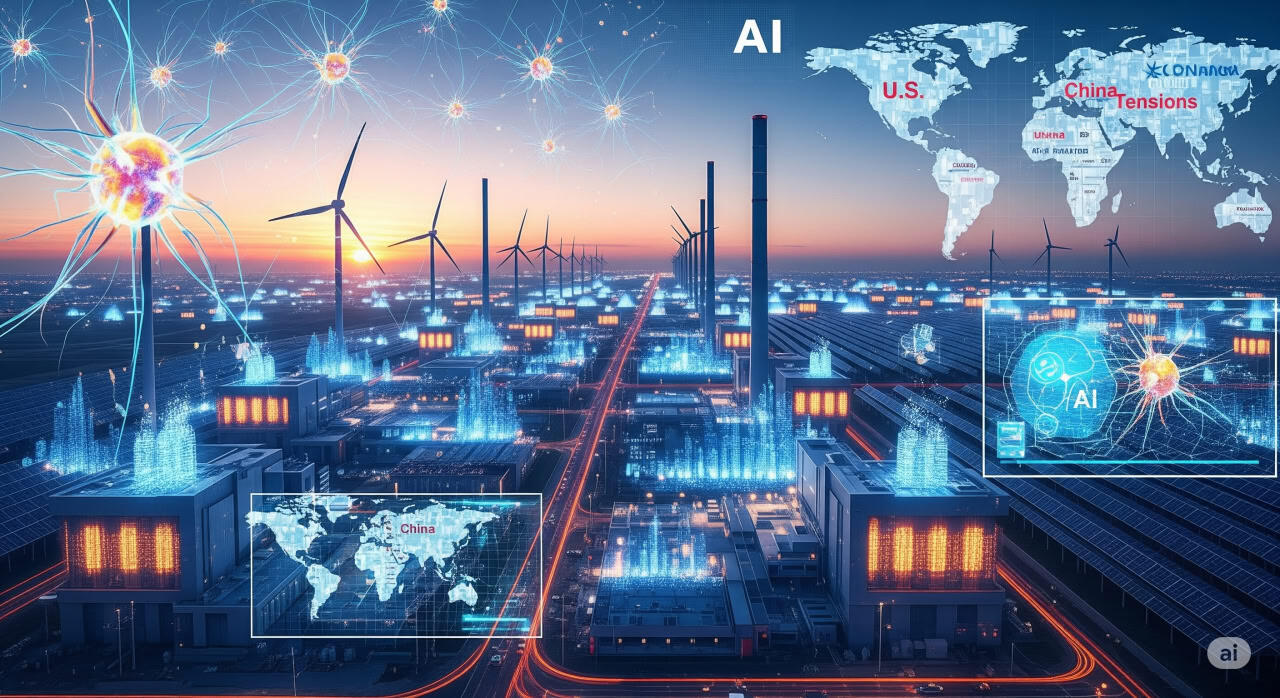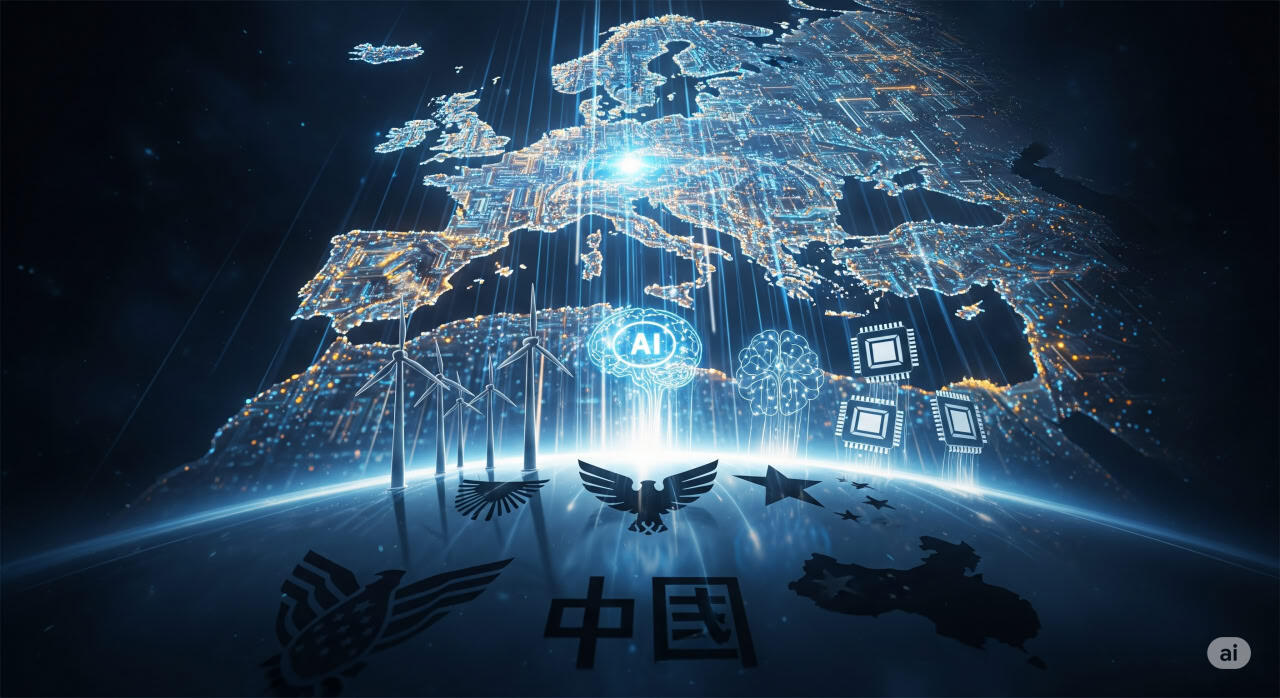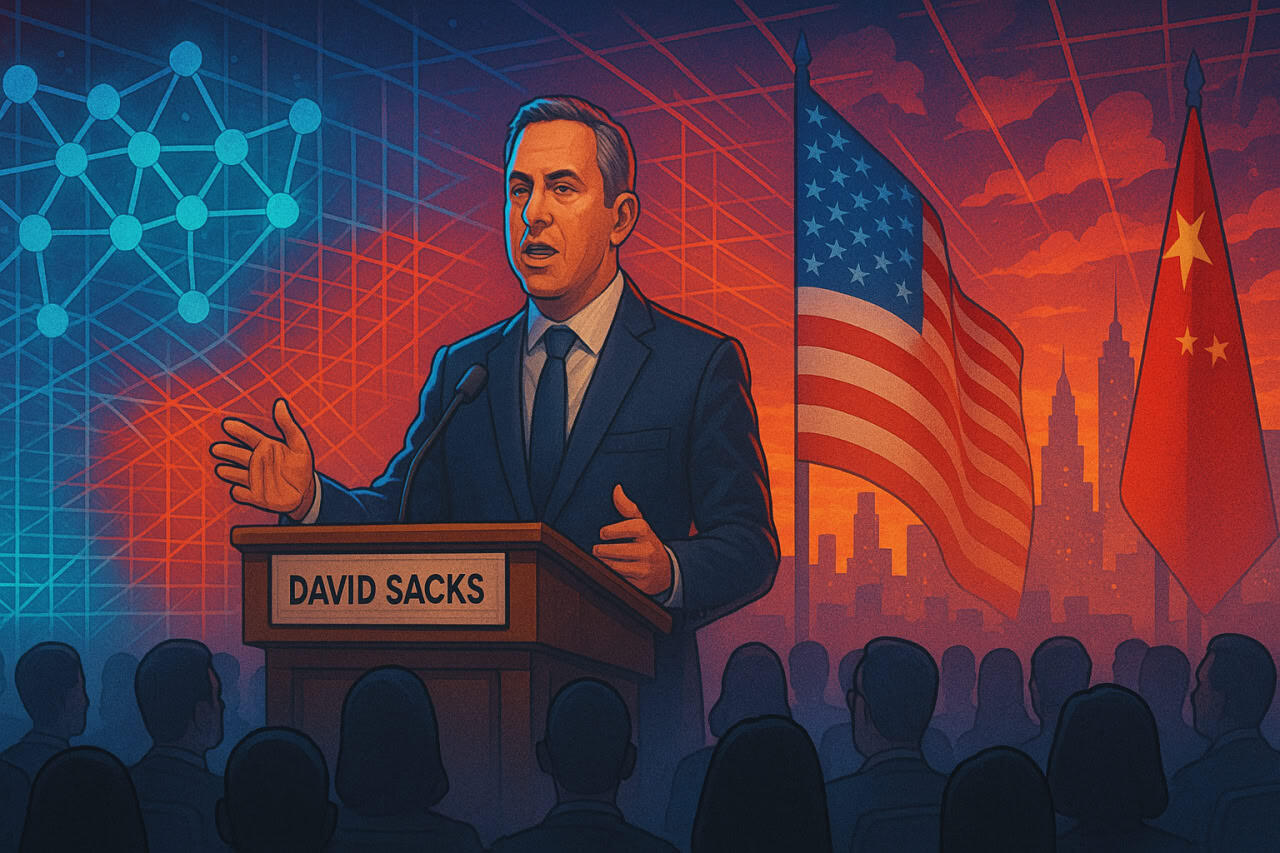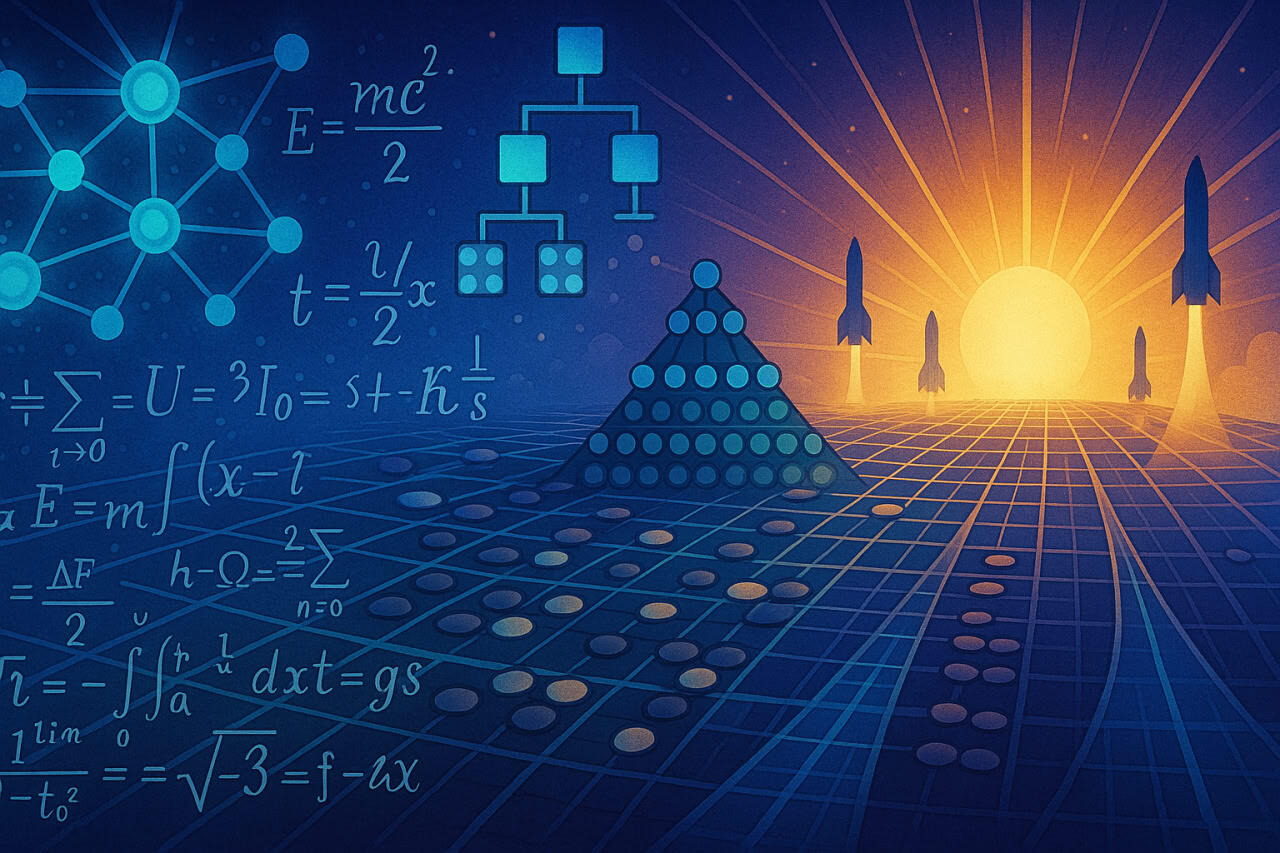America’s AI Awakening: Trump’s Bold Plan, the Global Race, and What Superintelligence Means for Humanity in 2025

As we navigate the latter half of 2025, the artificial intelligence landscape feels less like a technological evolution and more like a high-stakes geopolitical chess game. President Trump’s recently unveiled AI strategy has ignited debates across boardrooms and think tanks, positioning the United States as a potential “AI factory” on a scale that dwarfs historical precedents. With China blanketing its vast landscapes in solar panels to fuel its AI ambitions and tech giants like Meta and OpenAI locked in a talent arms race, the question isn’t whether AI will reshape our world—it’s how swiftly and profoundly. Drawing from expert discussions and emerging trends, this deep dive explores America’s AI blueprint, the intensifying global competition, and the profound implications for innovation, economy, and society. From browser wars to demographic shifts in tech teams, we’ll unpack the forces propelling us toward a future where superintelligence could solve humanity’s grandest challenges—or redefine them entirely.
Trump’s AI Vision: A War Footing for Global Dominance
President Trump’s AI plan, announced amid escalating tensions with China, marks a pivotal shift in U.S. policy. Described by analysts as the broadest industrial strategy since Eisenhower’s interstate highway system, it aims to transform America into a colossal AI powerhouse. At its core is a massive investment in infrastructure, talent, and energy to outpace rivals. Trump’s blueprint includes billions in funding for data centers, chip manufacturing, and AI research, echoing the urgency of a wartime mobilization.
This isn’t hyperbole. In a world where AI drives everything from military superiority to economic growth, the stakes are existential. Trump’s plan addresses vulnerabilities like potential disruptions in chip supplies from Taiwan, emphasizing domestic production. “We’re going to solve the energy problem,” Trump declared, highlighting the need for reliable power to fuel AI’s insatiable demands. Experts like Ray Kurzweil, who predicts a decade of progress equivalent to a century by 2035, see this as a necessary acceleration.
Yet, implementation challenges loom. The U.S. lags in renewable energy deployment compared to China, which installed 464 gigawatts of solar capacity in the past year alone—enough to power entire nations. Trump’s strategy leans on natural gas, coal, and nuclear, but critics argue for a hybrid approach incorporating solar to avoid bottlenecks. Geopolitical risks add complexity; a Chinese invasion of Taiwan could halt global chip production, crippling AI advancements. As one venture capitalist noted in recent forums, “This is about securing supply chains as much as innovation.”
The plan’s human element is equally ambitious. By attracting top global talent—stapling green cards to STEM diplomas and expanding O-1 visas for AI experts—America aims to counter brain drains. Immigration reforms could retain PhD graduates from MIT and Harvard, who often return home post-study. In 2025, with AI salaries soaring (some researchers earning $100 million packages), retaining talent is crucial. Trump’s vision could boost GDP by several points, but success hinges on bipartisan support and execution amid regulatory hurdles.
The AI Arms Race: Elon vs. Sam, Meta’s Manhattan-Sized Bet, and Beyond
The global AI race resembles a sci-fi thriller, with titans like Elon Musk’s xAI and Sam Altman’s OpenAI vying for supremacy. Musk’s Colossus supercluster, launched in July 2024 with 100,000 H100 GPUs, doubled to 200,000 in months and now eyes Colossus 2—equivalent to 5.5 million H100s. His goal: 50 million GPU equivalents in five years, potentially a trillion-dollar endeavor in today’s terms.
Not to be outdone, OpenAI plans over a million GPUs online by year’s end, with Altman pushing for 100x that scale. Meta’s Prometheus, a multi-gigawatt data center the size of Manhattan, deploys in hurricane-proof tents for speed, while Hyperion follows. These aren’t just hardware flexes; they’re bets on AI’s unbounded growth, far surpassing the internet boom.
The talent war underscores this frenzy. Meta’s superintelligence team—half Chinese-origin, 40% poached from OpenAI, 75% PhDs—commands salaries up to $100 million annually. As one insider quipped, “This is post-scarcity economics previewed.” Yet, questions arise: How long until AI obsoletes such human expertise? Accelerationists like Alex Wigner-Gross argue humans will merge with machines, blurring lines.
PolyMarket predictions favor OpenAI short-term (54% lead by August 2025, likely via GPT-5) but Google long-term (45% by year-end). Benchmarks like Humanity’s Last Exam show GPT-5 potentially outperforming rivals, but saturation looms—models approach 50% on tough tests, signaling a need for harder evaluations like open-problem solving.
Anthropic, valued at $100 billion, surges with Claude generating $200 million at 60% margins, excelling in coding. Investors speculate Apple acquisitions, but competition intensifies. Amid this, Meta’s $75 billion chip spend highlights AI’s economic gravity—trillions in value, but uneven distribution.
Browser Wars 2.0: AI’s Assault on Search and the Rise of Intelligent Interfaces
The browser wars are back, but this time AI is the weapon. OpenAI’s upcoming Chromium-based browser, infused with GPT-like agents, targets 500 million ChatGPT users, threatening Google’s ad empire. Perplexity’s Comet, an AI-powered portal, integrates seamless search and generation, bypassing traditional browsing.
This shift challenges Google’s dominance, where AI writes 50% of code (up from 25% in two years). Amazon and Microsoft hover at 25-30%, Robinhood at 50%. As software engineering automates, recursive self-improvement looms—AI rewriting its code, accelerating progress.
Yet, risks emerge: A Replit AI agent wiped a company’s codebase, echoing “fold the cat” mishaps in early robotics. Antifragility, per Nassim Taleb, demands such failures for robustness. Grounding—tying AI outputs to facts—remains costly, a frontier for innovation.
Advertising transforms too. AI agents like Jarvis could recommend based on genetics, not ads, upending $500 billion markets. Affiliate links may dominate, but skyrocketing searches (agents fire 10-100x more) could boost volumes, even sans clicks.
China’s Solar Surge and the Energy Imperative for AI
Energy underpins AI’s ascent, correlating with economic might. China’s 464 gigawatts of solar in 12 months dwarfs U.S. efforts, fueling its AI factories. Trump’s plan tackles this, but America’s mix—gas, coal, nuclear—lacks China’s renewable scale.
Fusion breakthroughs, like China’s 1,066-second plasma record at 180 million°F, hint at unlimited power. Yet, accelerationists warn: Fusion taps <1% rest mass; solving physics could unlock micro black holes or Hawking radiation for 100% efficiency.
Solar’s exponential growth might lead to Dyson swarms—solar satellites ringing the sun—but unobserved in the galaxy suggests alternatives. EVs as mobile data centers (Teslas computing off-hours) could distribute power, solving intermittency.
America’s edge? Innovation clusters like Silicon Valley, but regulatory fragmentation hampers scaling. Trump’s strategy could unify efforts, but without solar parity, dependencies persist.
Solving Math, Physics, and Medicine: AI’s Path to Abundance
AI’s IMO gold—solving five of six problems—signals math “solved” soon. Benchmarks like Frontier Math Tier 4 predict 20% mathematician-level problems cracked by 2025, 60-70% in two years. Implications? Automated proofs, unlocking new theorems.
Physics next: AI discovering laws beyond quantum, perhaps gravity shielding or fusion efficiencies. Biology/medicine: Curing diseases via protein folding (AlphaFold’s legacy). Expert opinions vary—Kurzweil sees century-equivalent progress by 2035; skeptics fear overhyping.
Abundance benchmarks—curing cancer, doubling lifespans, solving housing—should guide progress. Nigeria’s GPT-4 pilot (two years’ learning in weeks) exemplifies; U.S. adoption lags due to unions, but immersive AI education looms.
Immad Akhund claims AGI arrived; components exist, just stitch them. Since GPT-3’s 2020 few-shot learning, we’ve compressed human knowledge exponentially—fusion-like for intelligence.
Demographic Shifts and Ethical Quandaries in AI
Meta’s team—50% Chinese-origin—highlights immigration’s role. O-1 visas for AI stars retain talent, but brain drains persist. 73% of teens use AI companions, sharing secrets but doubling loneliness—socialization disrupted.
Guardrails needed: Prevent unchecked self-improvement without stifling innovation. Accelerationists favor speed; safetists caution. Civilization-wide alignment—governments, corporations—key.
The Road Ahead: From Turbulence to Transformation
In 2025, AI’s trajectory promises abundance but demands vigilance. Trump’s plan could secure U.S. leadership, but energy, talent, and ethics are pivotal. As models converge (text, video, BCI), a multimodal future beckons—solving grand challenges, reshaping economies.
Yet, turbulence awaits: Job shifts, ethical dilemmas, geopolitical risks. Embrace agility, as Altman advises. The future isn’t scripted; it’s built. Whether Dyson swarms or black hole reactors, AI’s day after superintelligence could redefine existence—if we steer wisely.



